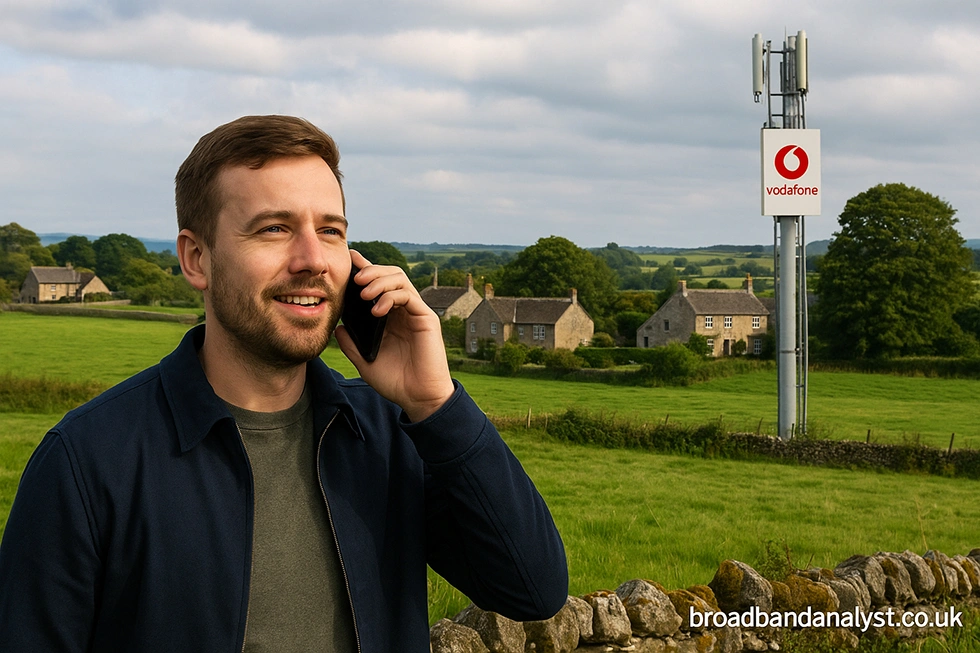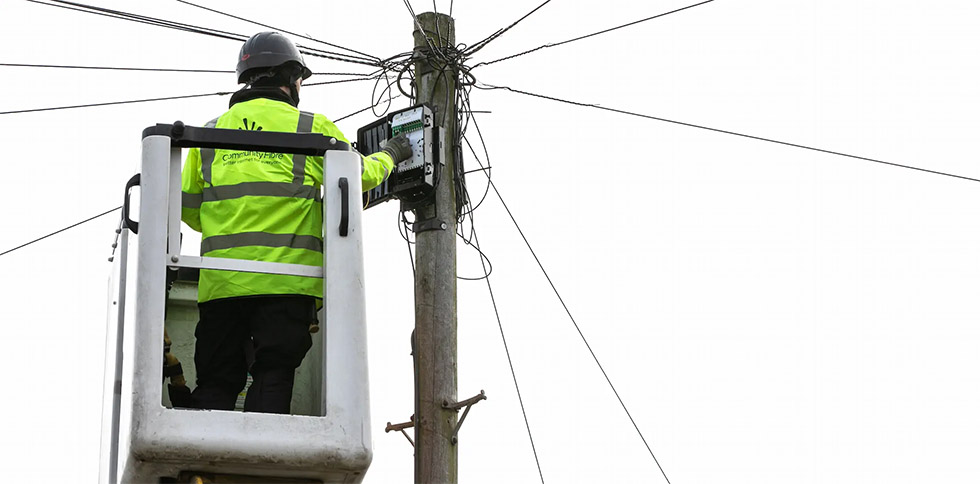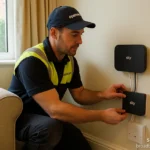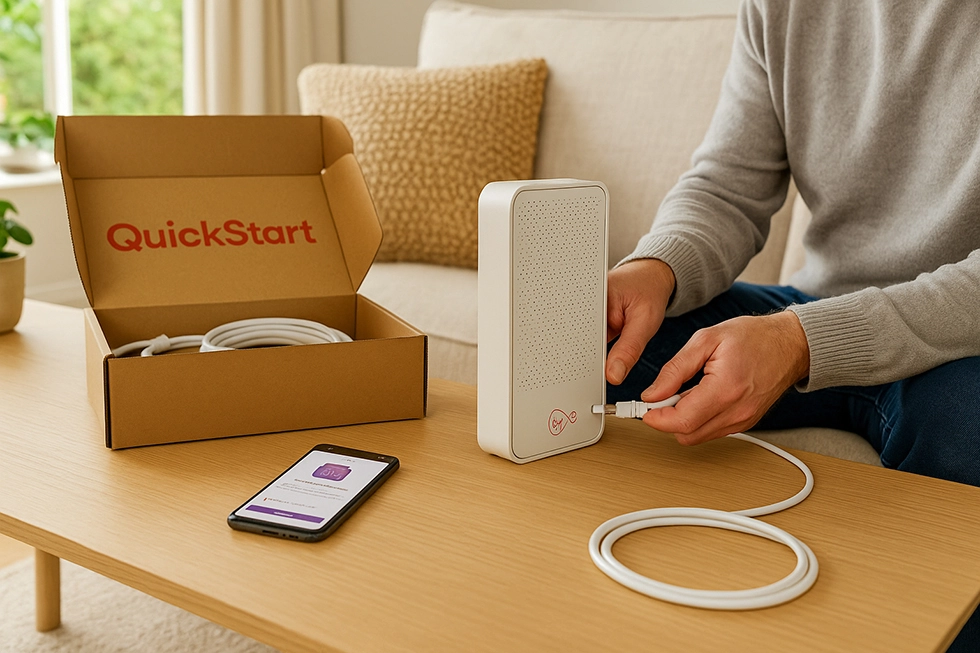The merger between Vodafone and Three UK has already begun to show clear benefits for mobile users across the country. Independent data collected by Opensignal points to early progress in areas that matter most to customers: coverage, speed, and reliability.

By combining mast sites and allowing devices to connect to the strongest available signal, the new joint network is reducing the number of areas with weak service. This means fewer dropped connections and better access to mobile data in places where one operator previously had patchy coverage.
The early figures also highlight a difference in how each group of customers is benefiting so far. Three users are seeing faster download speeds, reflecting the impact of extra spectrum being brought into use alongside the merger. Vodafone users, on the other hand, are seeing steadier improvements in reliability, with everyday tasks like calls and browsing completing more consistently.
These initial results suggest that the Vodafone–Three integration is beginning to have a measurable impact, even though the full programme of upgrades will take years to complete.
Coverage gains after merger
Before the merger was completed in May 2025, Opensignal measured Three’s coverage experience at 8.0 out of 10 and Vodafone’s at 8.4. These scores reflected the strength of each operator’s individual network footprint.
Once the two are fully integrated, the combined network is forecast to reach a score of 9.0, signalling a step change in nationwide coverage. In practical terms, this would mean a 13% boost for Three users and a 7% improvement for Vodafone customers, giving both groups a stronger and more consistent service.
This uplift is already beginning to take shape through the rollout of multi-operator core network (MOCN) technology. With MOCN, customers’ devices can automatically connect to whichever mast delivers the best signal in their area, regardless of which operator originally owned it. This reduces coverage gaps and makes better use of the infrastructure both companies have in place.
By August 2025, around 600 mast sites had been upgraded to support MOCN, with plans to expand this to more than 9,000 by spring 2026. As more sites go live, users can expect to see noticeable improvements in both rural and urban locations where one operator previously had stronger coverage than the other.
Speed improvements for Three customers
Opensignal’s data indicates that Three customers are already seeing a noticeable rise in download speeds as the merger takes effect. Between the second and third quarters of 2025, average download speeds on Three’s network grew by 8%, moving from 43.16Mbps to 46.72Mbps. This kind of increase makes activities like video streaming, large file transfers, and cloud-based work run more smoothly.
Vodafone users, however, have not yet recorded the same kind of uplift in these early months, although industry analysts expect that spectrum integration and ongoing upgrades will gradually deliver faster speeds for them as well.
The speed boost for Three is partly due to roaming arrangements between the two networks, but it also reflects wider technical upgrades already underway. Earlier in the year, Three activated an additional 5MHz block of spectrum in the 1800MHz band across nearly 15,000 mast sites.
This change alone provided faster connections for over seven million customers, showing how spectrum refarming can quickly translate into better real-world performance. As integration deepens and more spectrum is combined, further improvements in download speeds are likely to follow.
Reliability scores move upward
Reliability, which Opensignal defines as the ability of users to successfully start and complete everyday mobile tasks, has also shown clear signs of improvement since the merger. For Three customers, the reliability score rose by 20 points between the second and third quarters of 2025, while Vodafone users saw a smaller but still meaningful 10-point increase during the same period.
These improvements suggest that mobile connections are holding up more consistently, with fewer dropped calls, stalled app sessions, or failed data transfers. For customers, that means greater confidence that their phone will connect when needed, whether they are making a call, loading a webpage, or using location-based apps. As more mast sites are upgraded and network sharing extends further, both operators’ users should see reliability continue to strengthen in day-to-day usage.
Investment and long-term targets
Vodafone and Three have pledged a long-term investment of £11 billion to expand and modernise their joint mobile network over the next decade. At the heart of this programme is the nationwide deployment of 5G Standalone, the next-generation version of 5G that does not rely on older 4G infrastructure.
The company has set an ambitious target to extend this technology to 99.95% of the UK population by 2034, aiming to deliver near-universal access to advanced mobile connectivity. In parallel, it is also pushing into fixed wireless broadband, with plans to connect 82% of households by 2030 as an alternative to traditional wired internet.
Part of the strategy involves consolidating mast sites and reusing spectrum more efficiently, steps that will help remove thousands of square kilometres of patchy or incomplete coverage. This is expected to make mobile service more reliable in both urban and rural areas, while also supporting higher speeds.
Although the full integration of Vodafone and Three into a single unified core network is still some years away, the early gains already visible in coverage, reliability and speed suggest that the merger is beginning to reshape how customers experience mobile connectivity in practice.
The next phase of upgrades
The rollout of MOCN-enabled sites is set to accelerate through 2026, with thousands of additional locations due to be switched on. Opensignal’s projections suggest that as this expansion gathers pace, the gains in coverage, speed and reliability will spread across much larger parts of the UK. This means areas that previously struggled with patchy service from one operator should increasingly benefit from the combined strength of both networks.
At this early stage, the most visible improvements are being seen by Three customers, particularly in faster download speeds and stronger reliability. Vodafone users, meanwhile, are beginning to notice a steady rise in reliability scores, with more consistent call quality and fewer data interruptions. As the integration deepens and more mast sites are upgraded, both groups of customer










